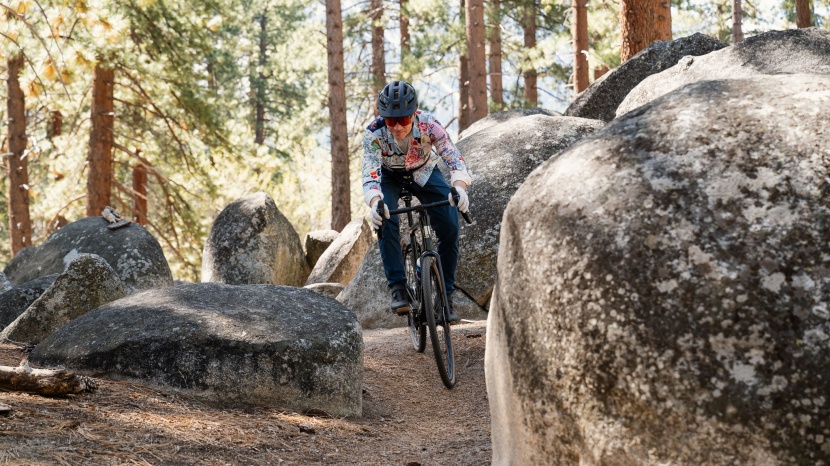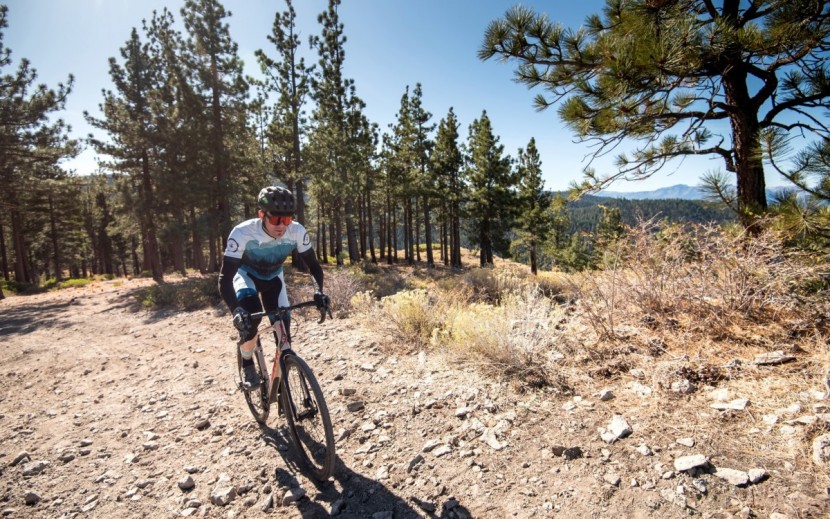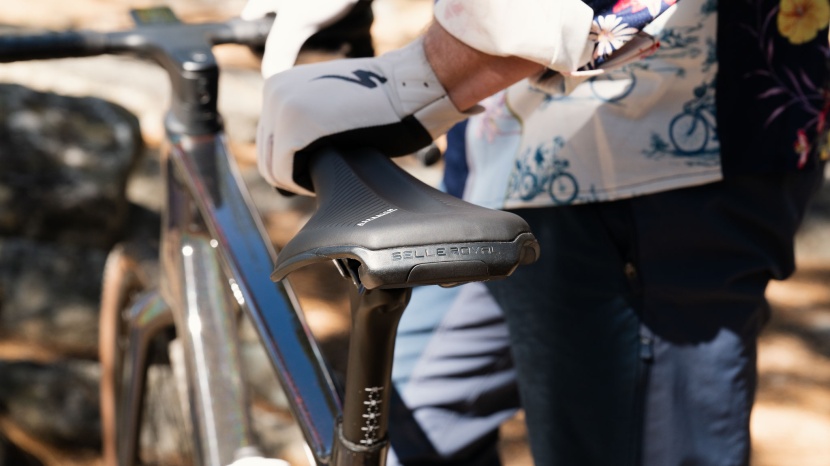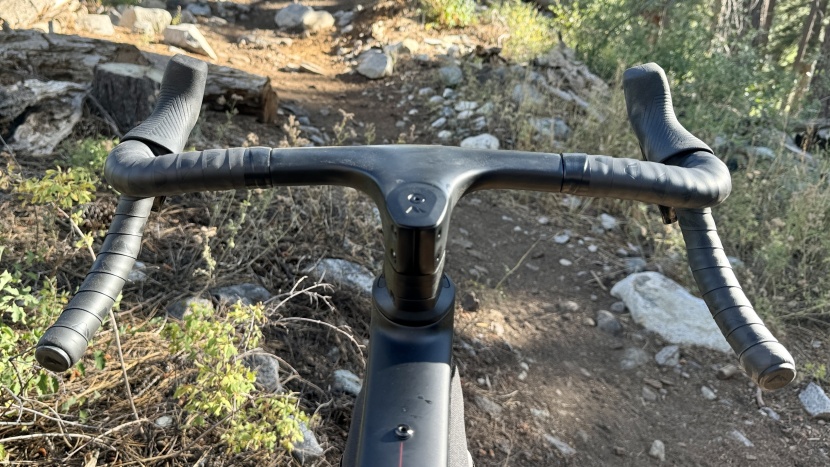Beyond weighing and measuring all of the bikes we test, the majority of our testing takes place in the field. Our expert testers are obsessive cyclists and racers who compete in endurance gravel events. Their extensive product testing and athletic experience make our testers ideal candidates to scrutinize and evaluate the performance of these bikes in various situations. Each tester rides each bike as if it were their own on training rides, at races, or on casual jaunts with friends, all while focusing on the downhill and climbing performance, versatility, weight, and build quality of each model.
Downhill Performance
While testing these bikes, our testers ride them downhill, a lot. On descents of various lengths and road conditions, they considered how well each performed at high speeds and low speeds, in the drops and on the hoods. From smooth to chunky and rutted gravel roads, flowing singletracks to “you probably shouldn't try to ride a gravel bike down that,” our testers rode it all on backyard loops and all-day sessions. While riding, they considered how the bike's frame design, geometry, and components played a role in each's overall performance.
Climbing Performance
Similar to testing downhill performance, the only true way to test how a bike performs on the climbs is by riding it uphill. Thankfully, our testers are masochists who thoroughly enjoy long rides and racking up the vertical. Short, punchy climbs and long, slow grinds, they love to push their limits on any type of climb while chasing PRs or training for their next event. Geometry, weight, and components all play a role in how well a bike goes uphill and were considered when analyzing each model's climbing prowess.
Versatility
The very nature of gravel bikes makes them all relatively versatile. Pretty much any gravel bike can be used for commuting, road riding, light-duty singletrack riding, and usually some bike packing or touring. Geometry plays a role in versatility as well, with some of the steeper bikes excelling on pavement or short-track racing while the slacker bikes give the rider a bit more relaxed handling that lends itself to single-track exploration. Some bikes are lighter-weight and better suited to racing than others, while others are more comfort-oriented and better for casual riding. Some of these bikes can be used with either 700c or 650b wheels and tires. We did our best to suss out the differences between the different models and determine which would work best for what and why. Some things were obvious, like rack or accessory mounts for bike packing or super light and stiff frames better suited for racing.
Weight
Weight is the most objective of all the metrics. The weight of each bike was determined by weighing them on a hanging Park Tool scale without pedals. Unless otherwise stated, all bikes are weighed tubeless with 2 ounces of sealant in each wheel instead of butyl tubes.
Build
We rated each model on the build or component specification that it comes with. Obviously, bikes at different price points will come with varying build kits at different performance levels. Generally speaking, the quality of a bike's build is related to the price, as more expensive components are usually lighter weight and higher quality. Our testers did their best to separate their perceptions of a bike's build quality from the actual performance in the field. They also did their best to consider the price-to-performance ratio of the bikes in this test in an attempt to level the playing field.
Conclusion
We did our best to test each of the gravel bikes in this review thoroughly. All of the gravel bikes we tested will definitely serve you better than none at all, and there are plenty of other models out there to choose from. The most important thing is getting a bike that fits you right, meets your needs, and that you can afford. Then, getting out and riding it.





